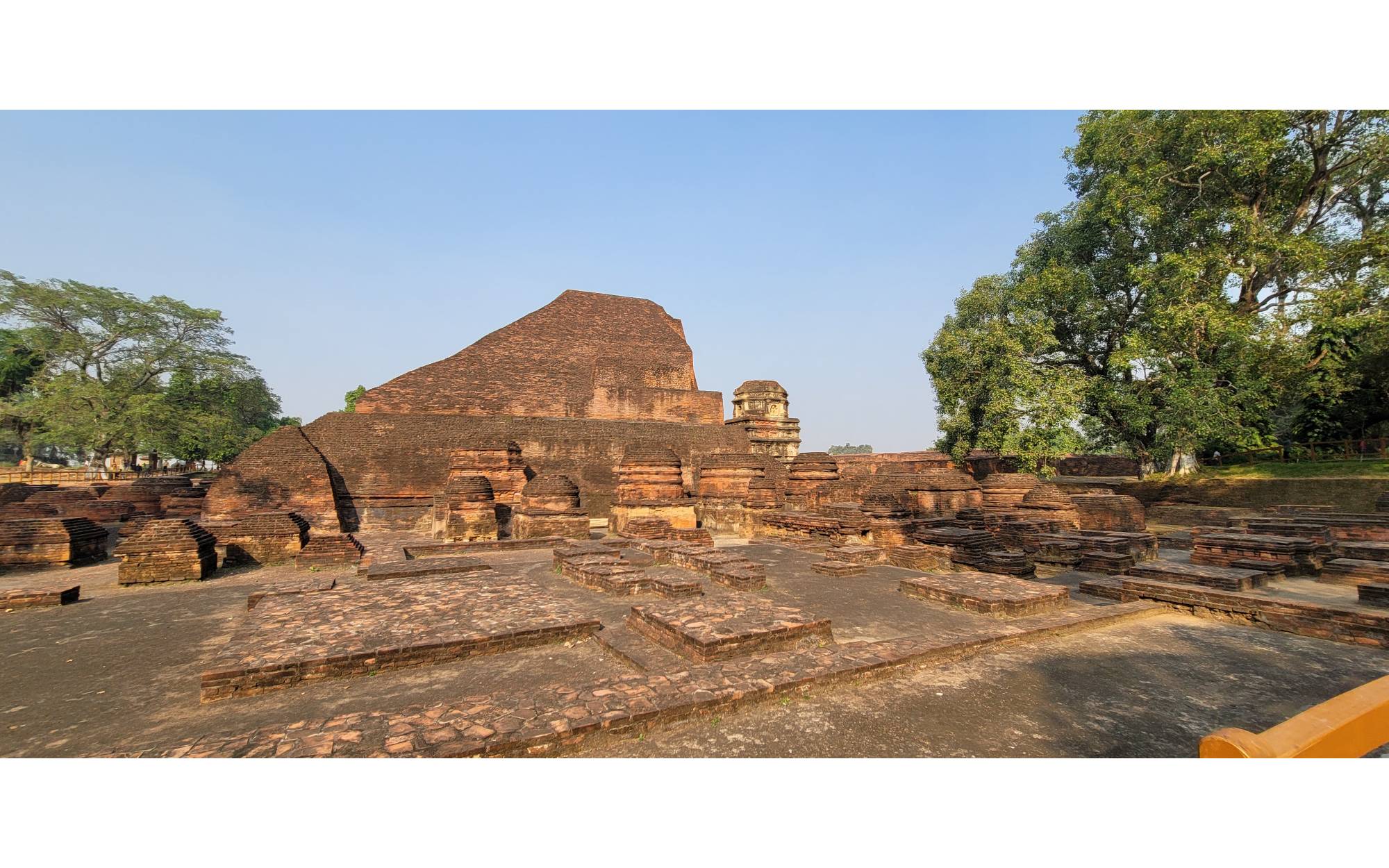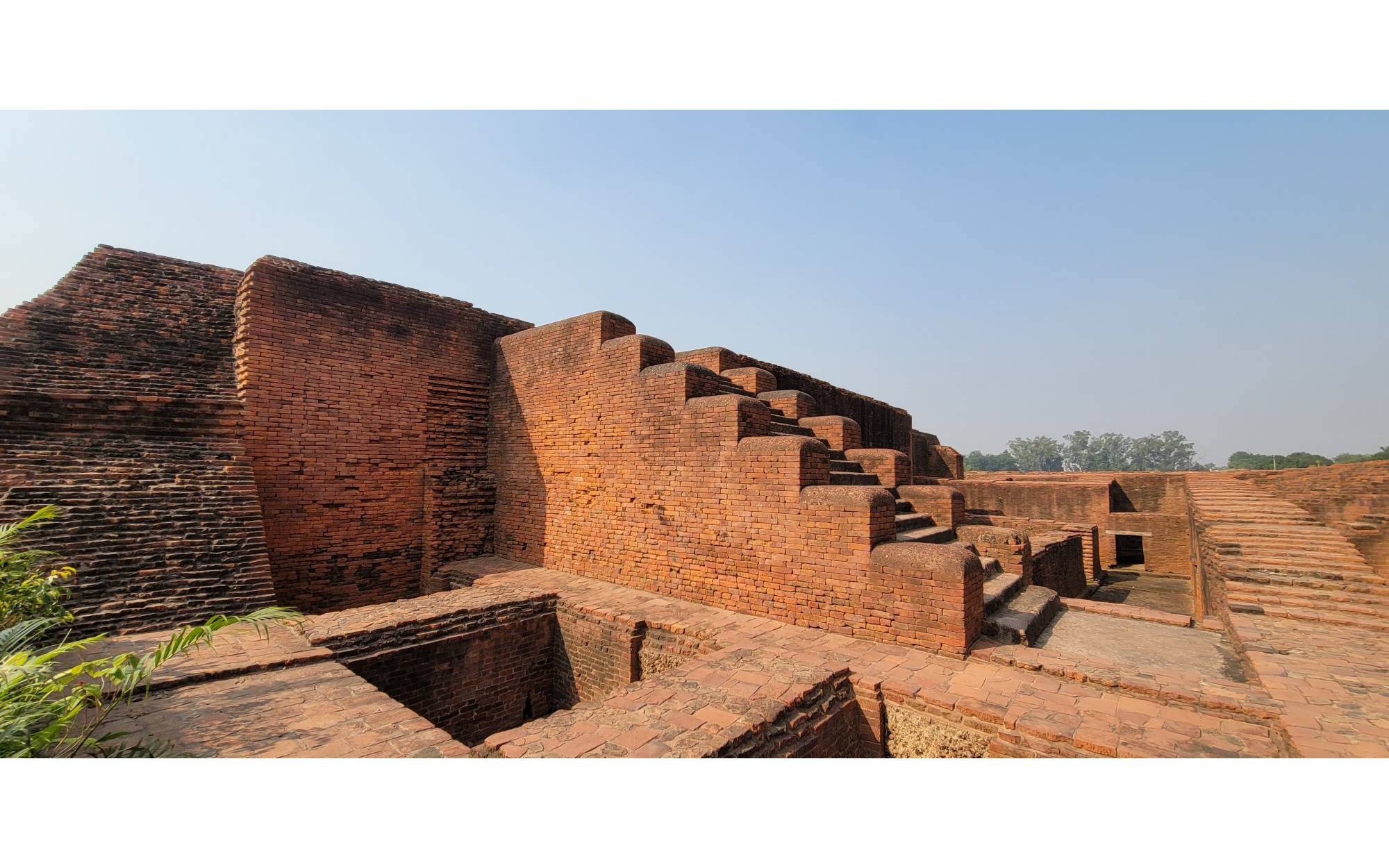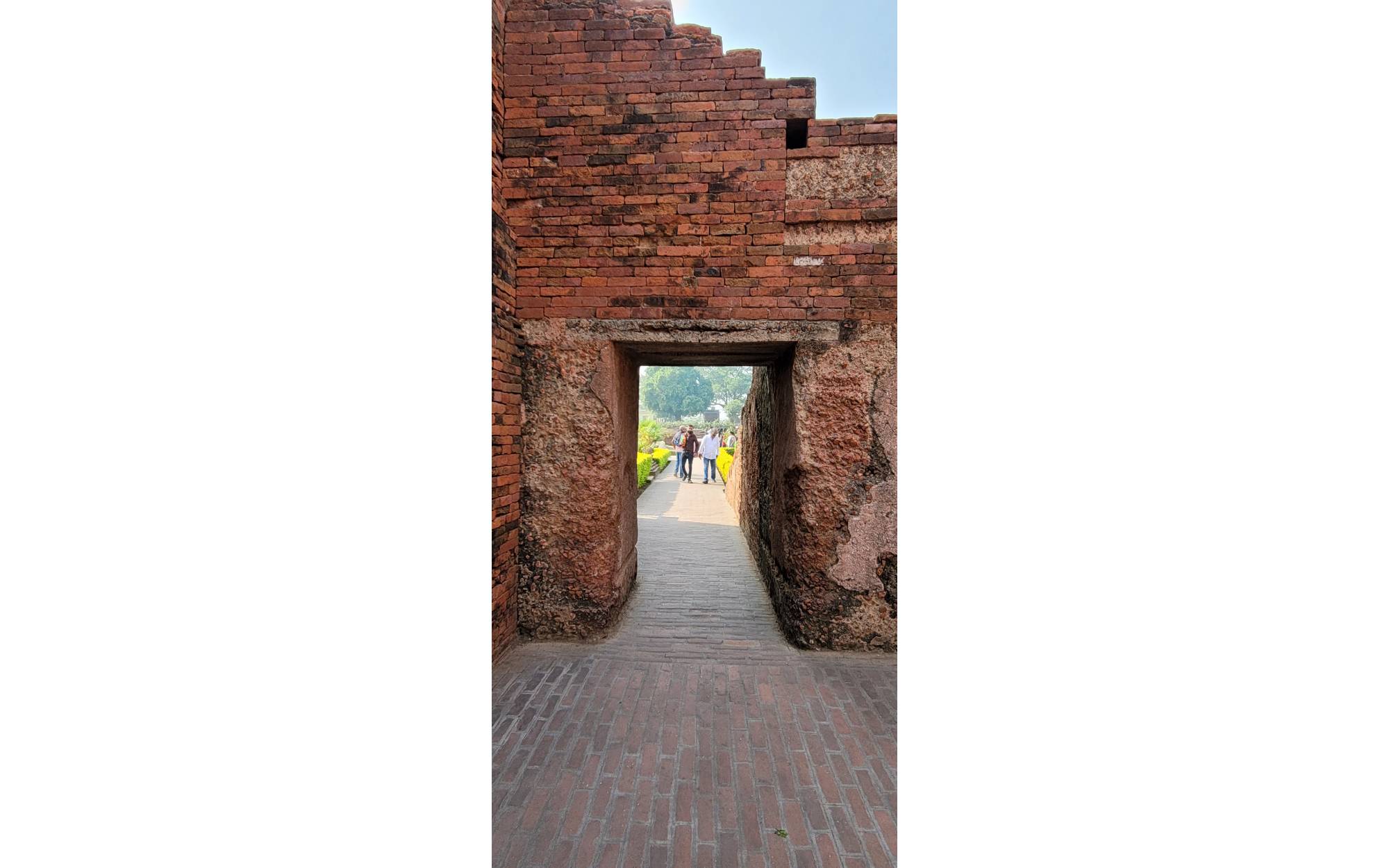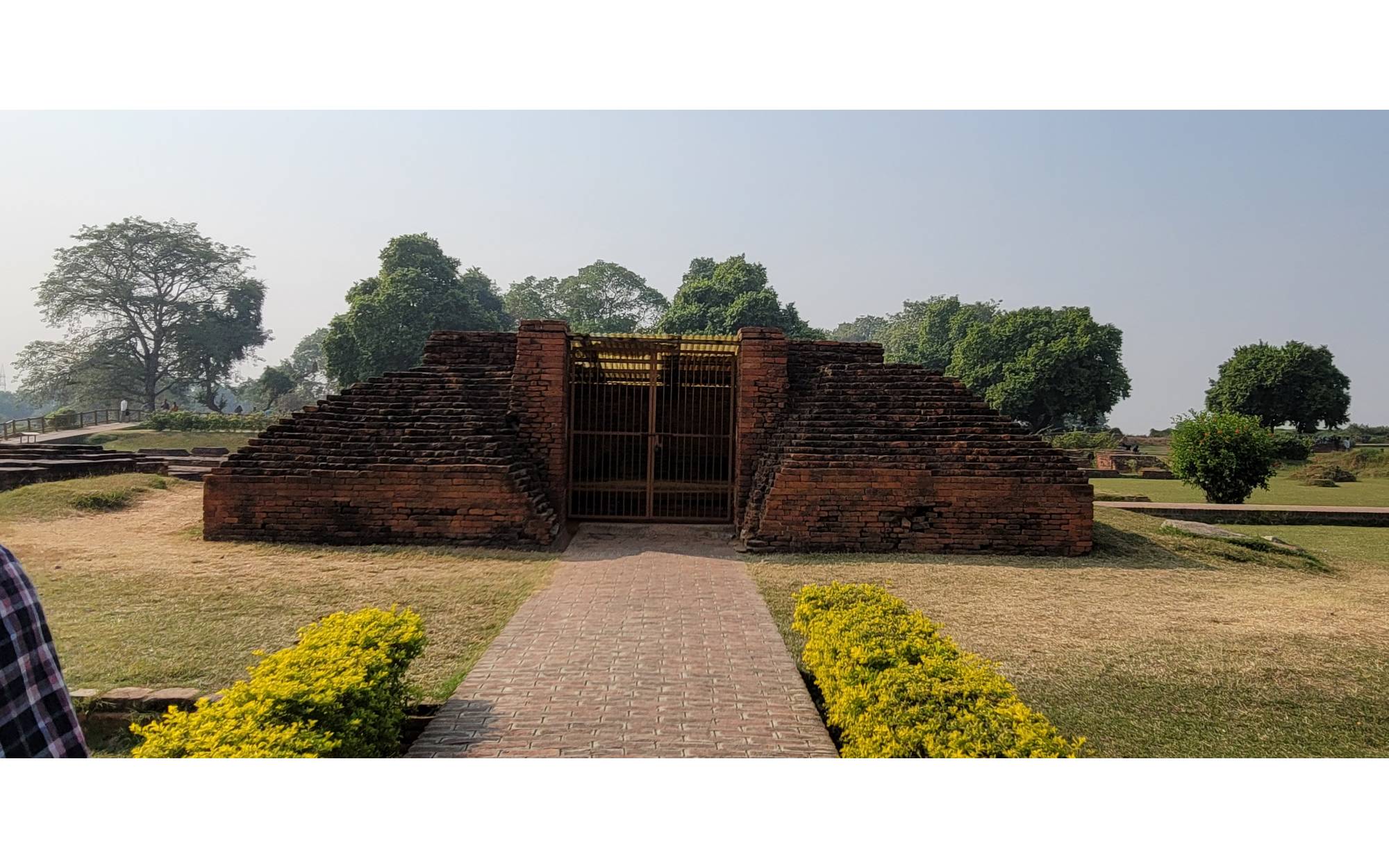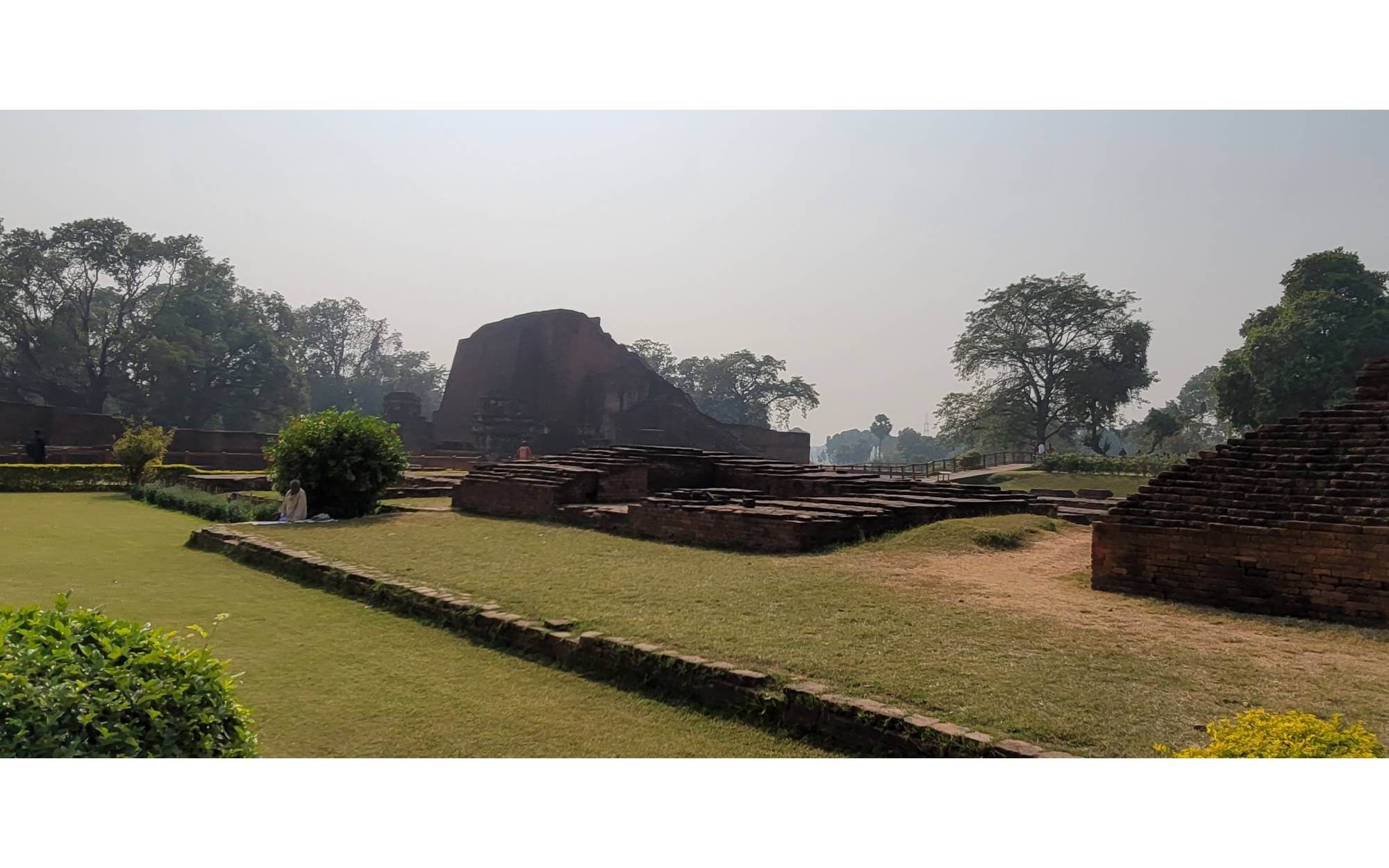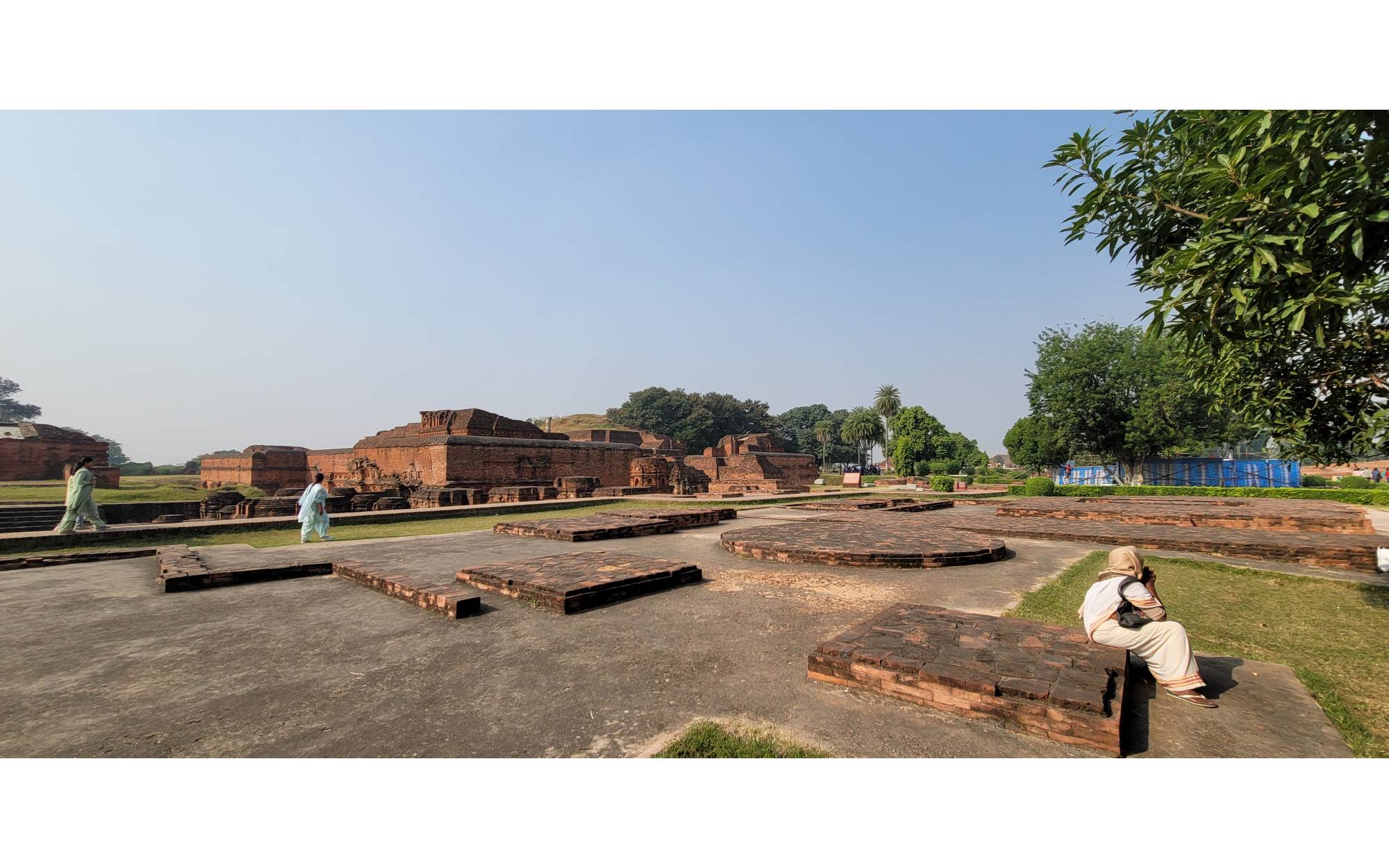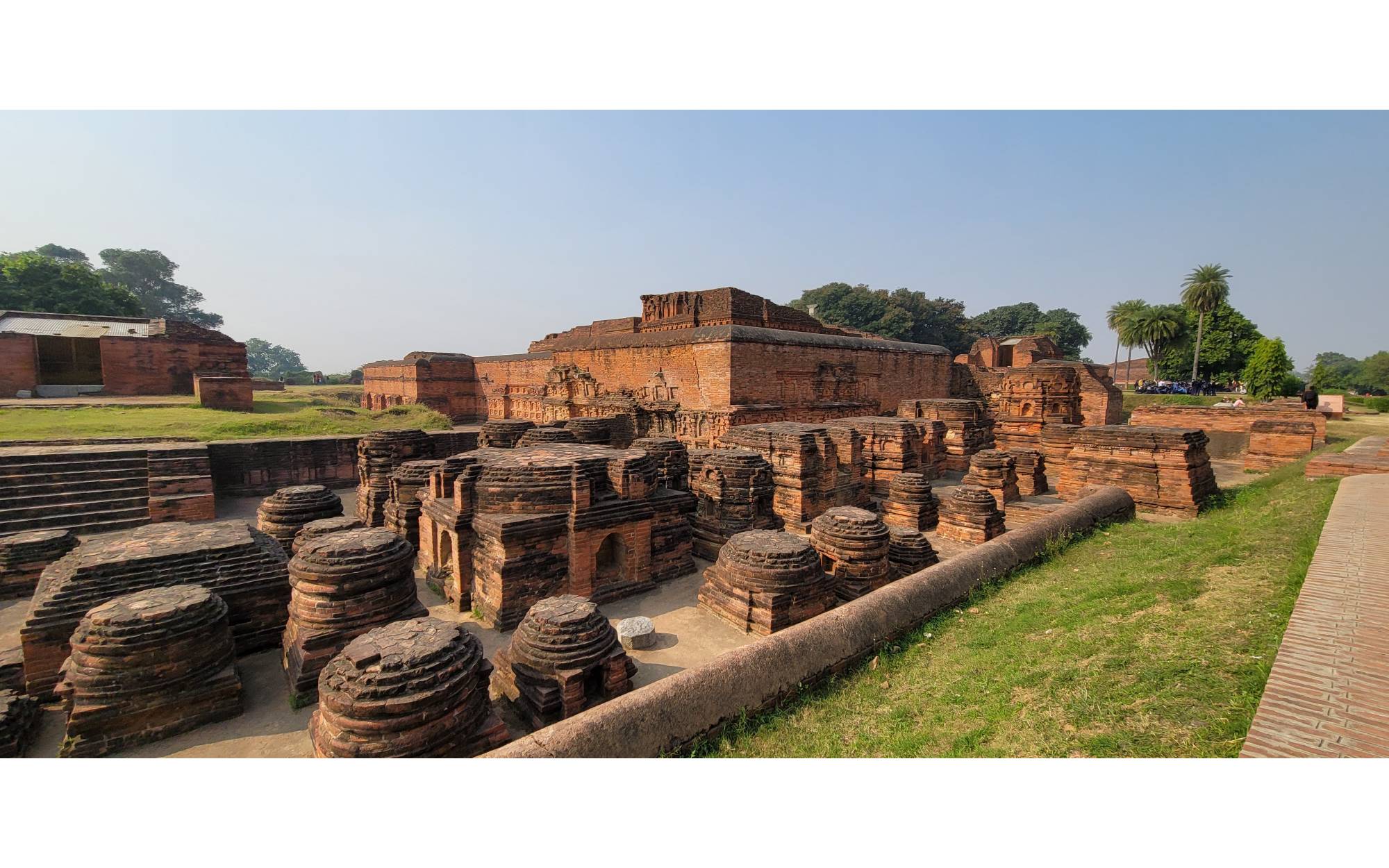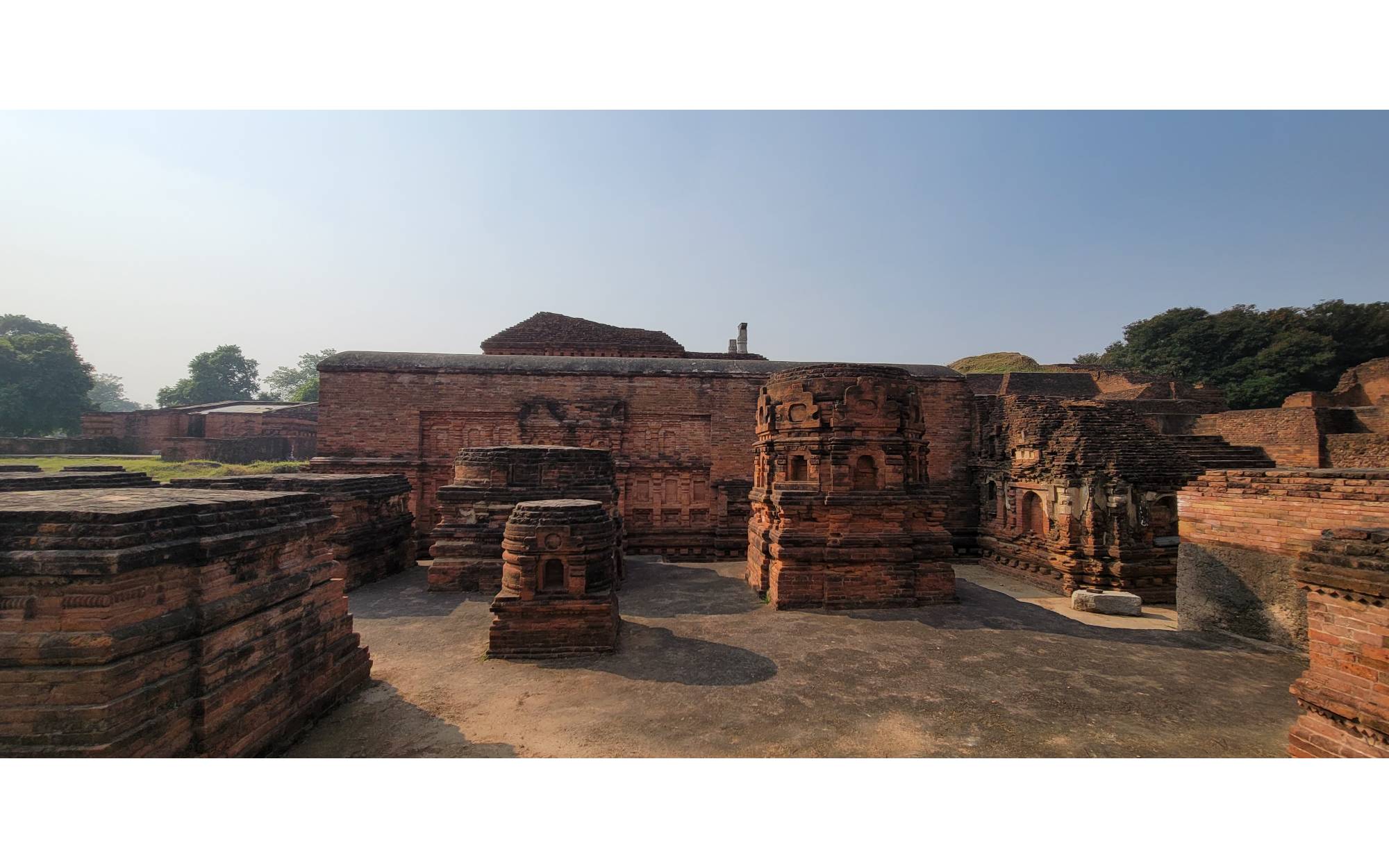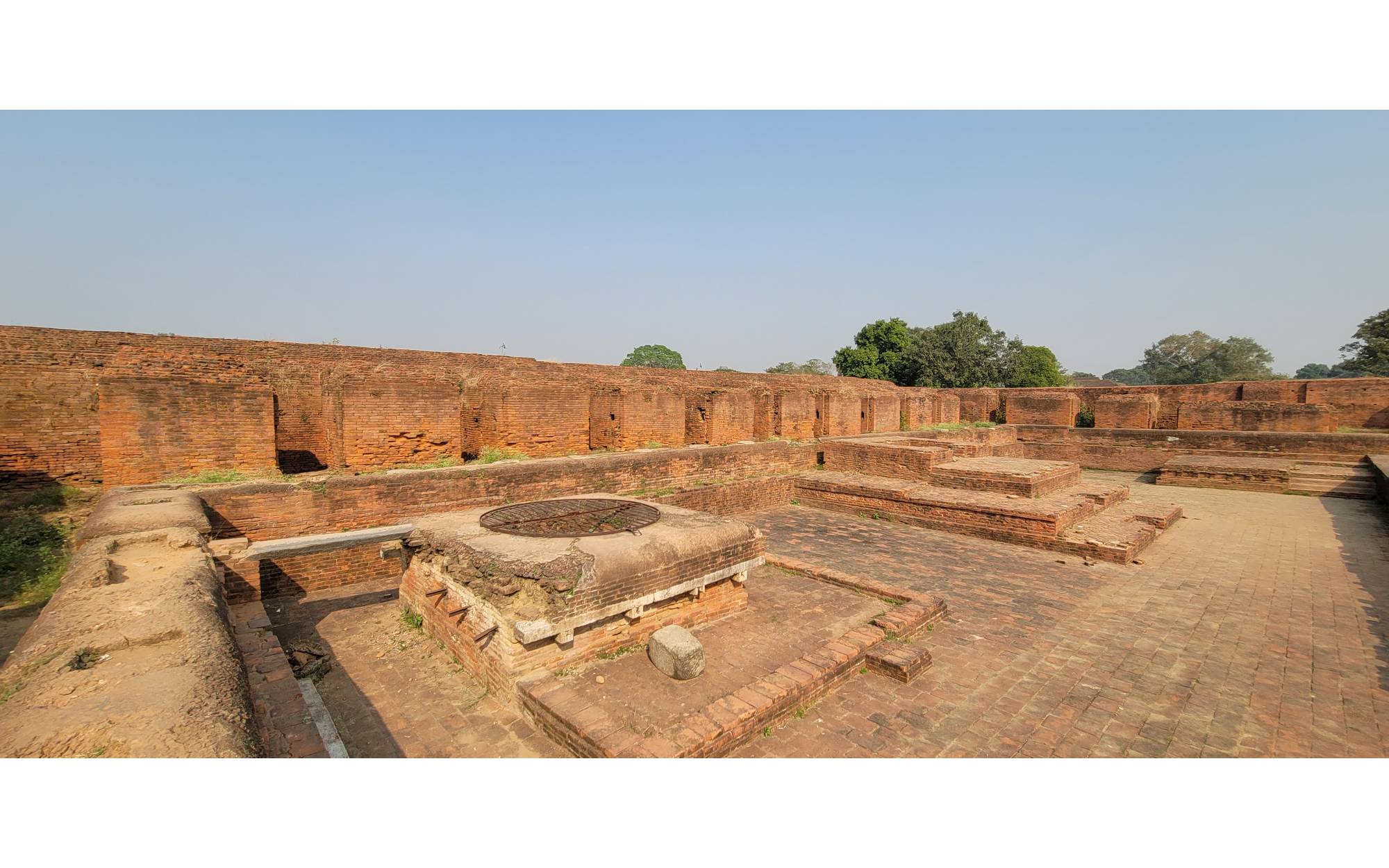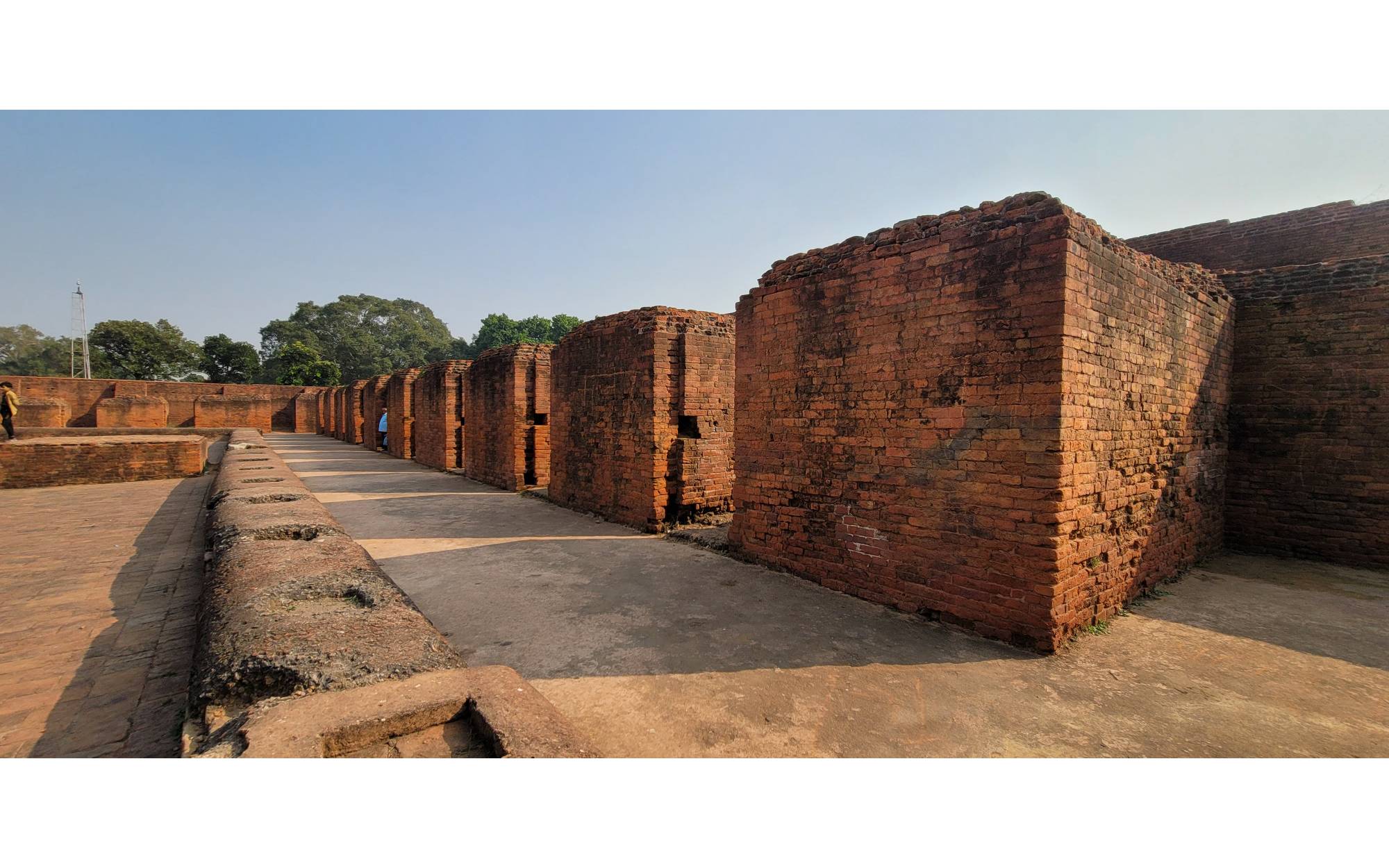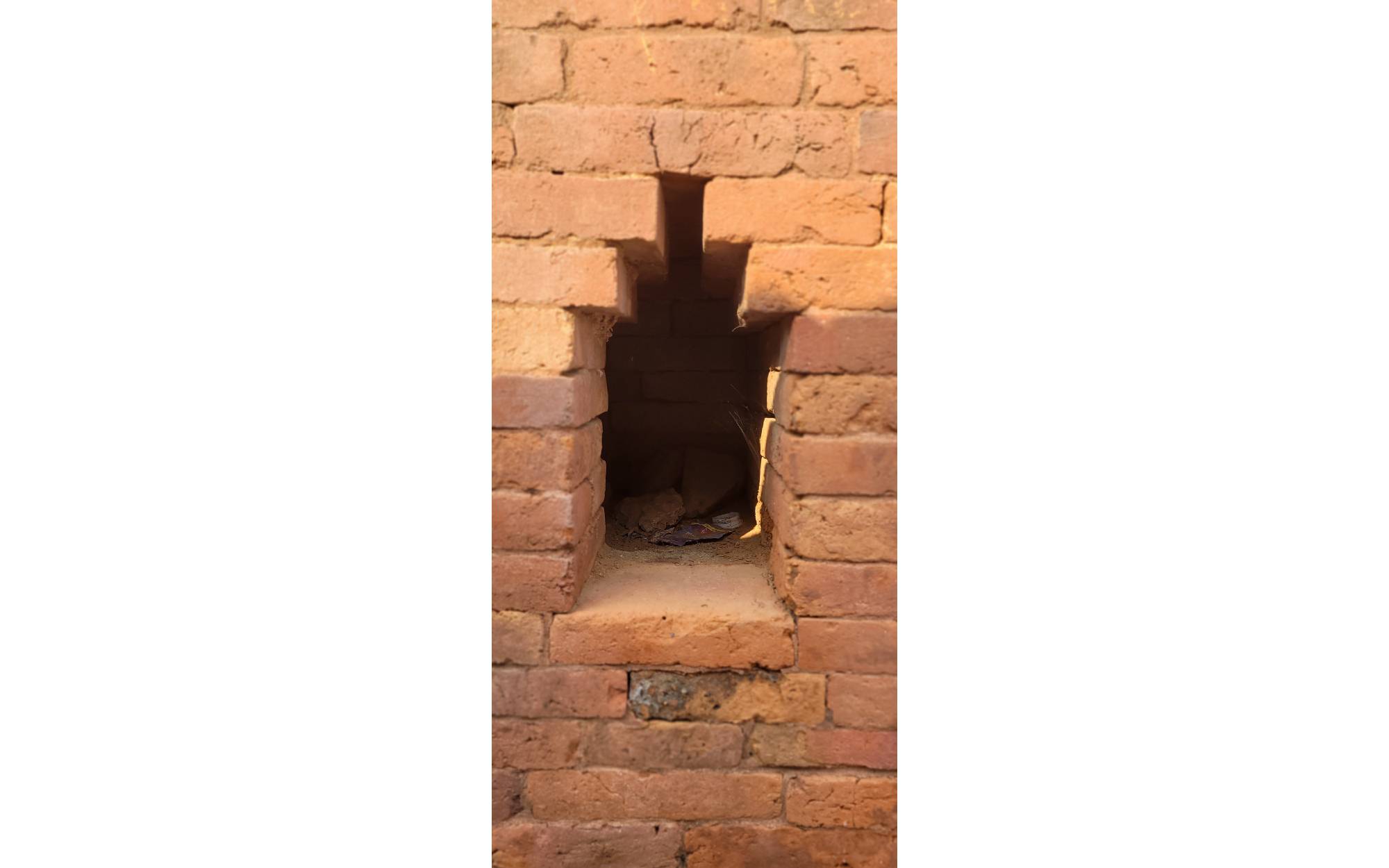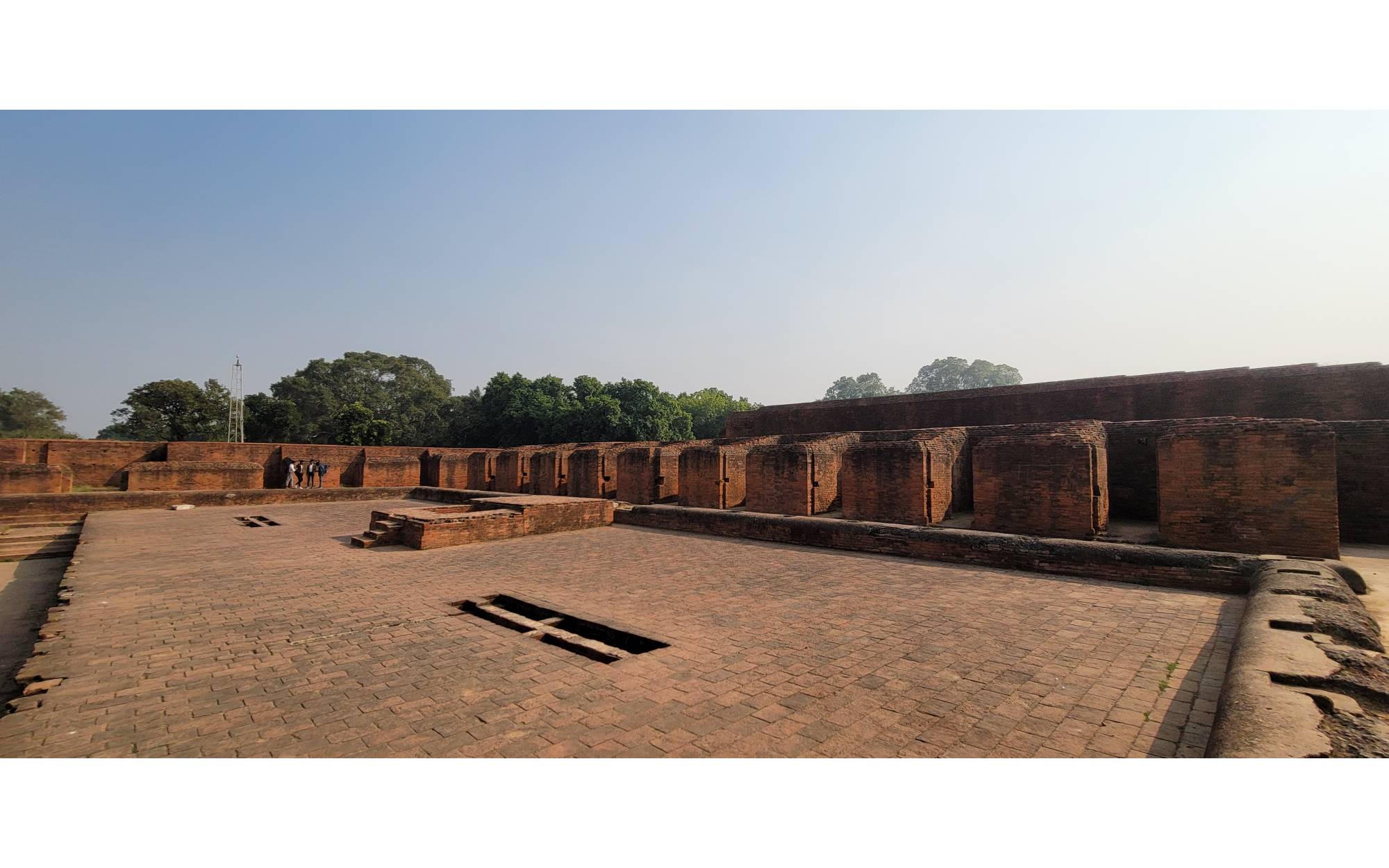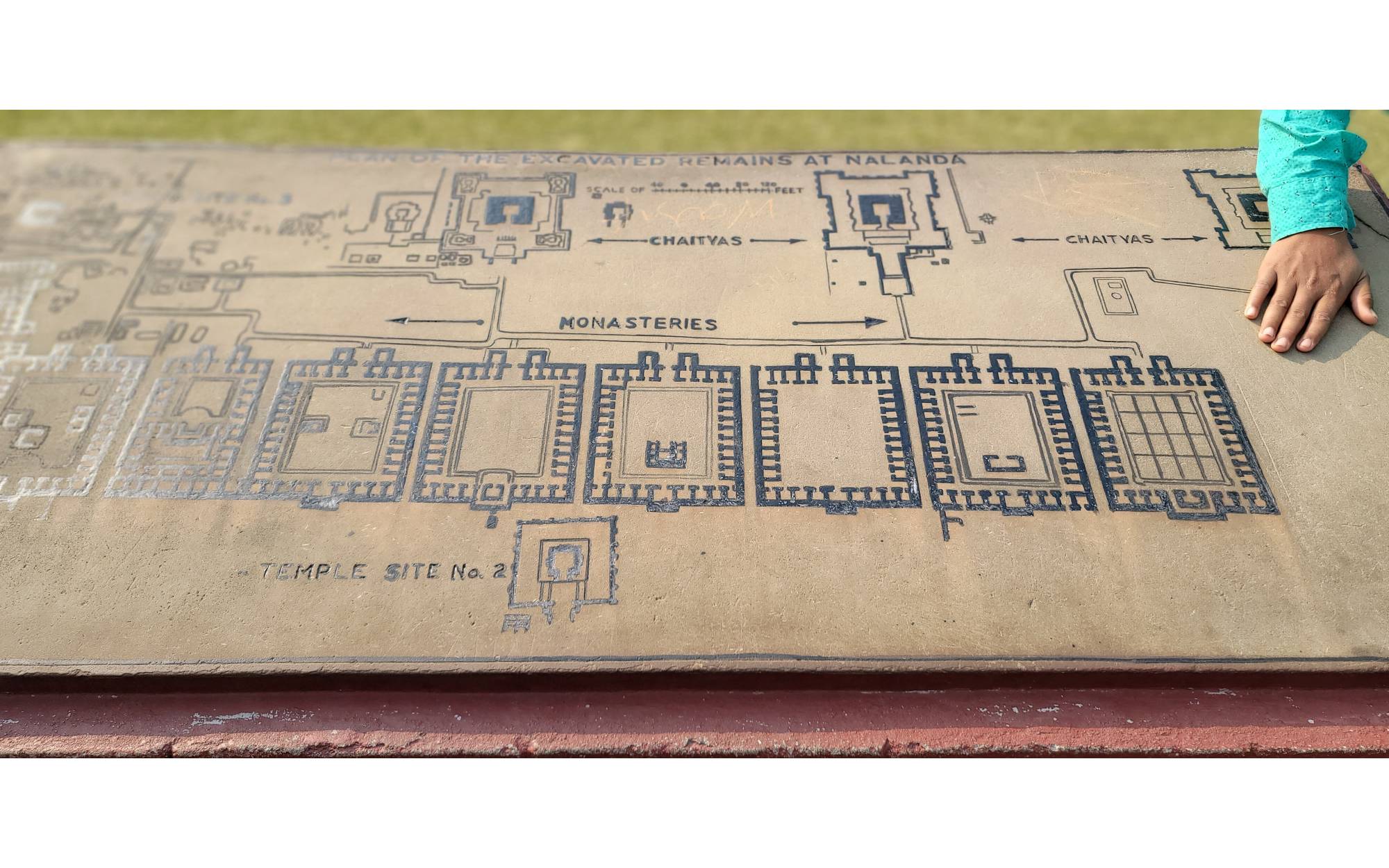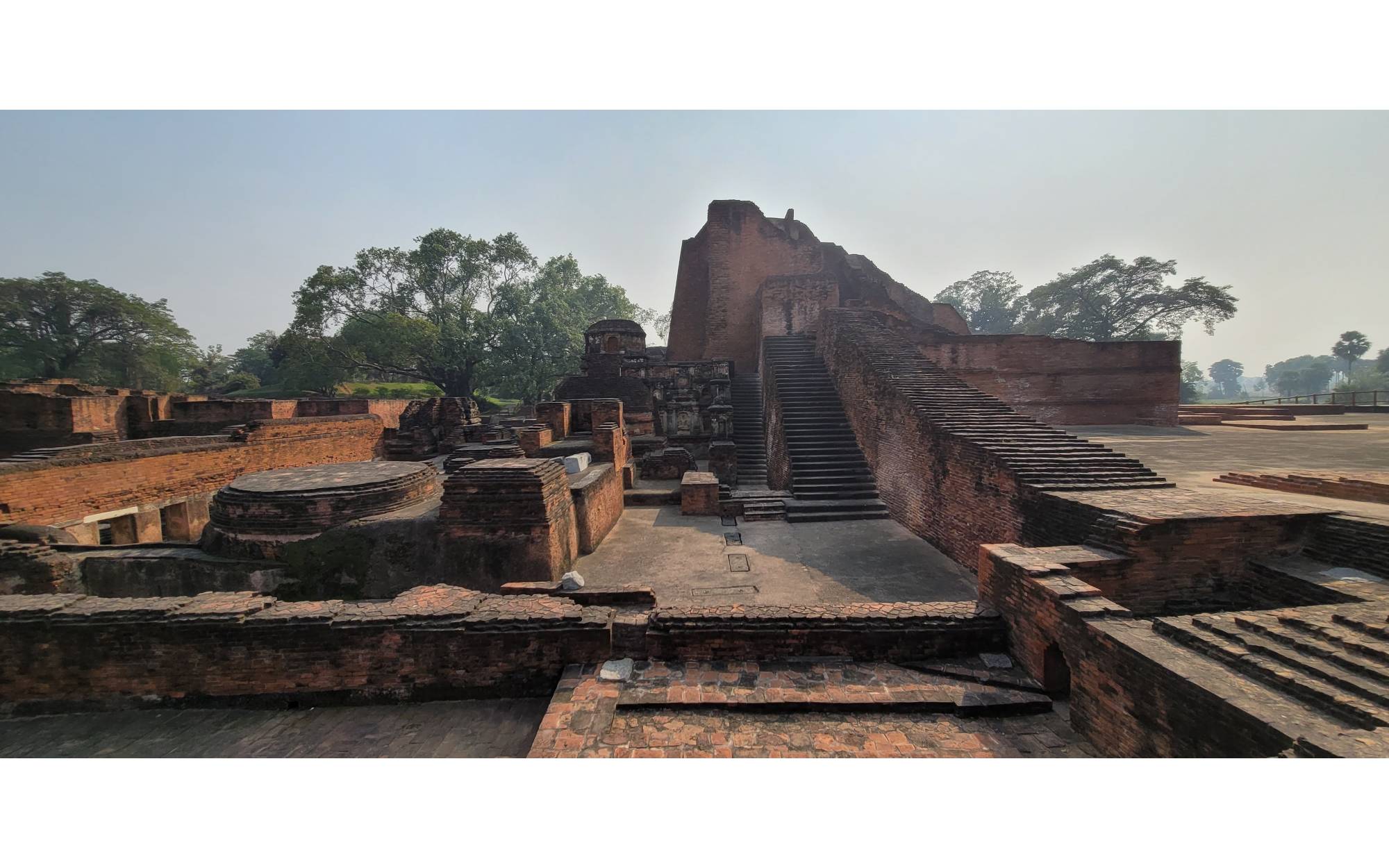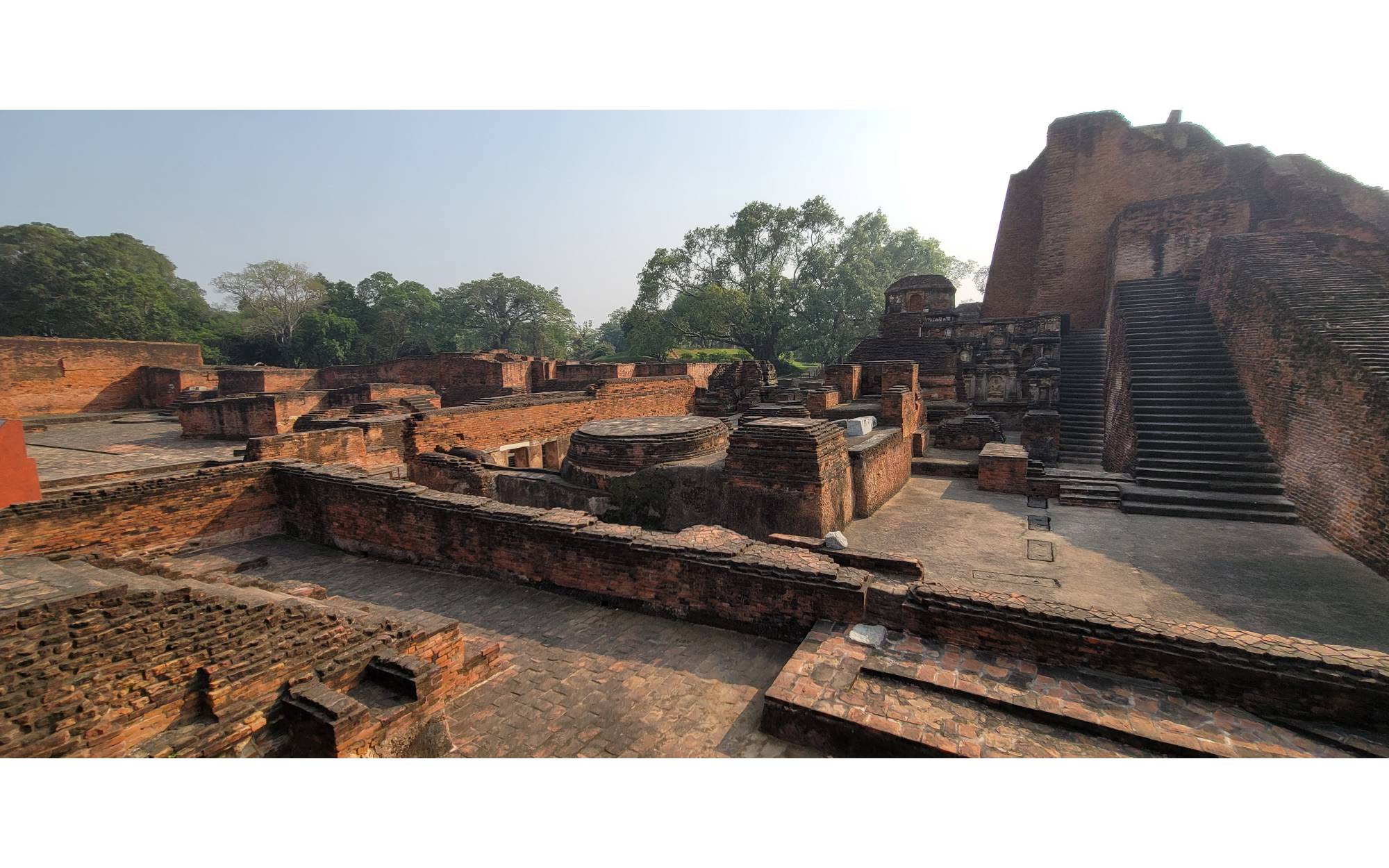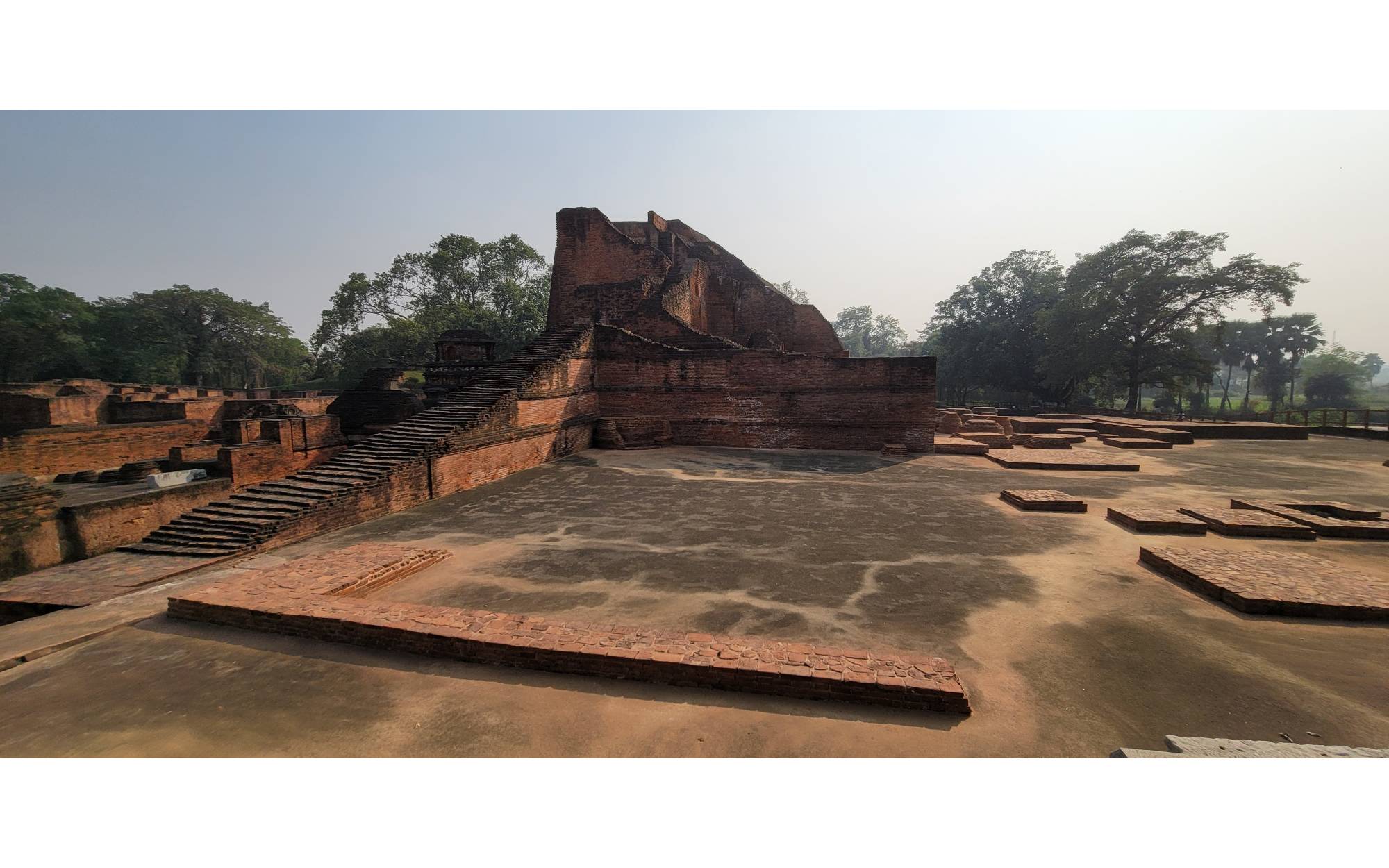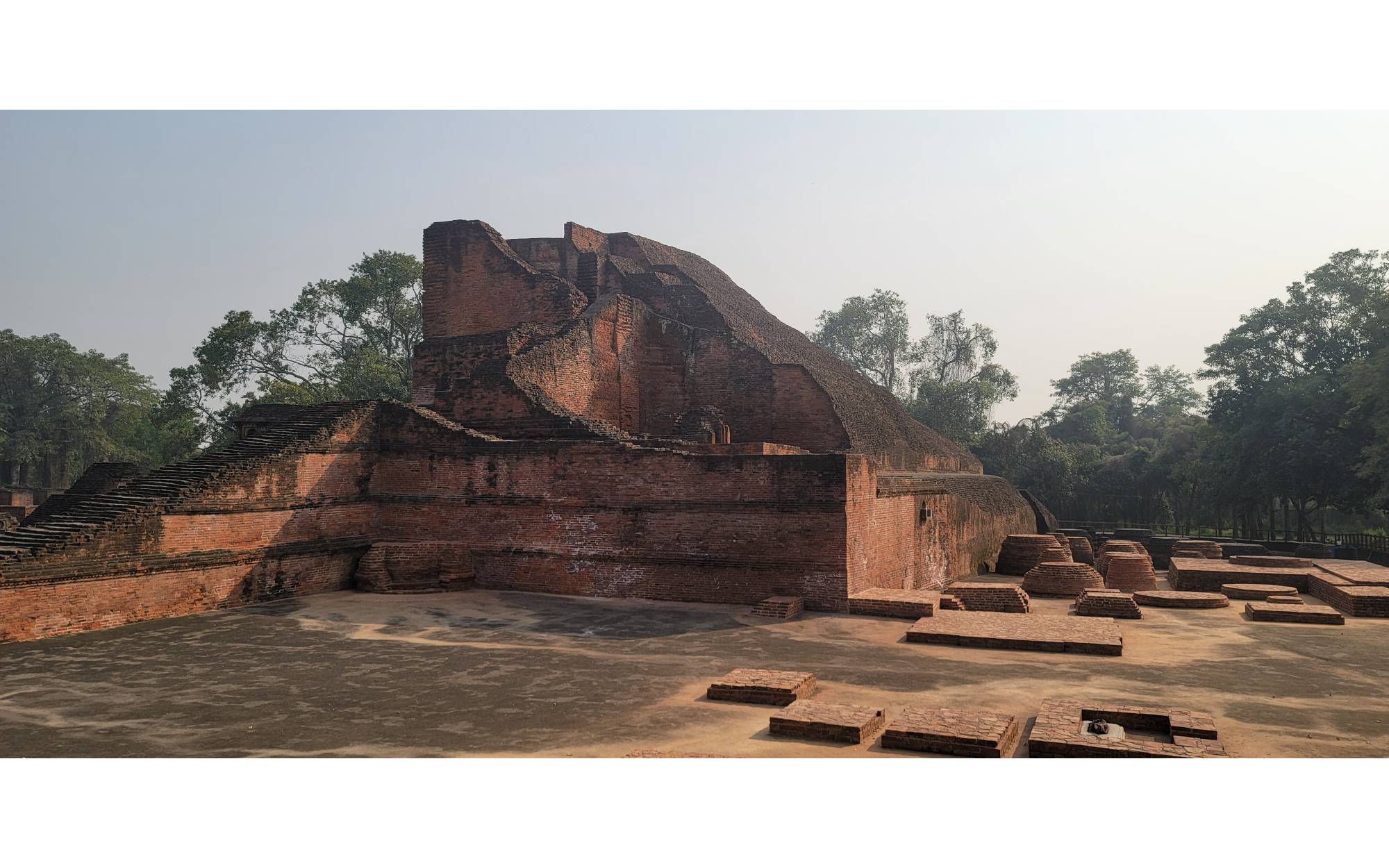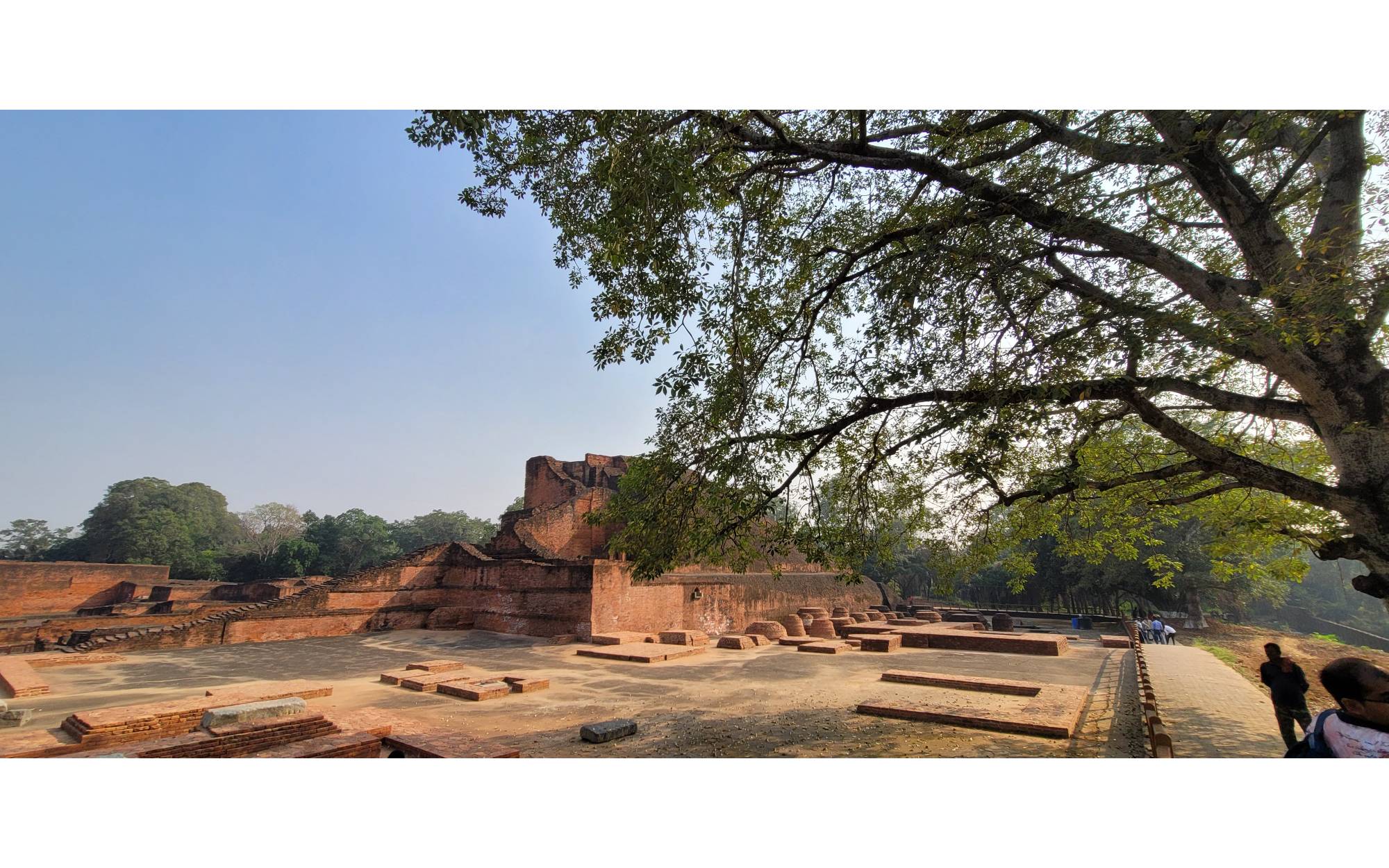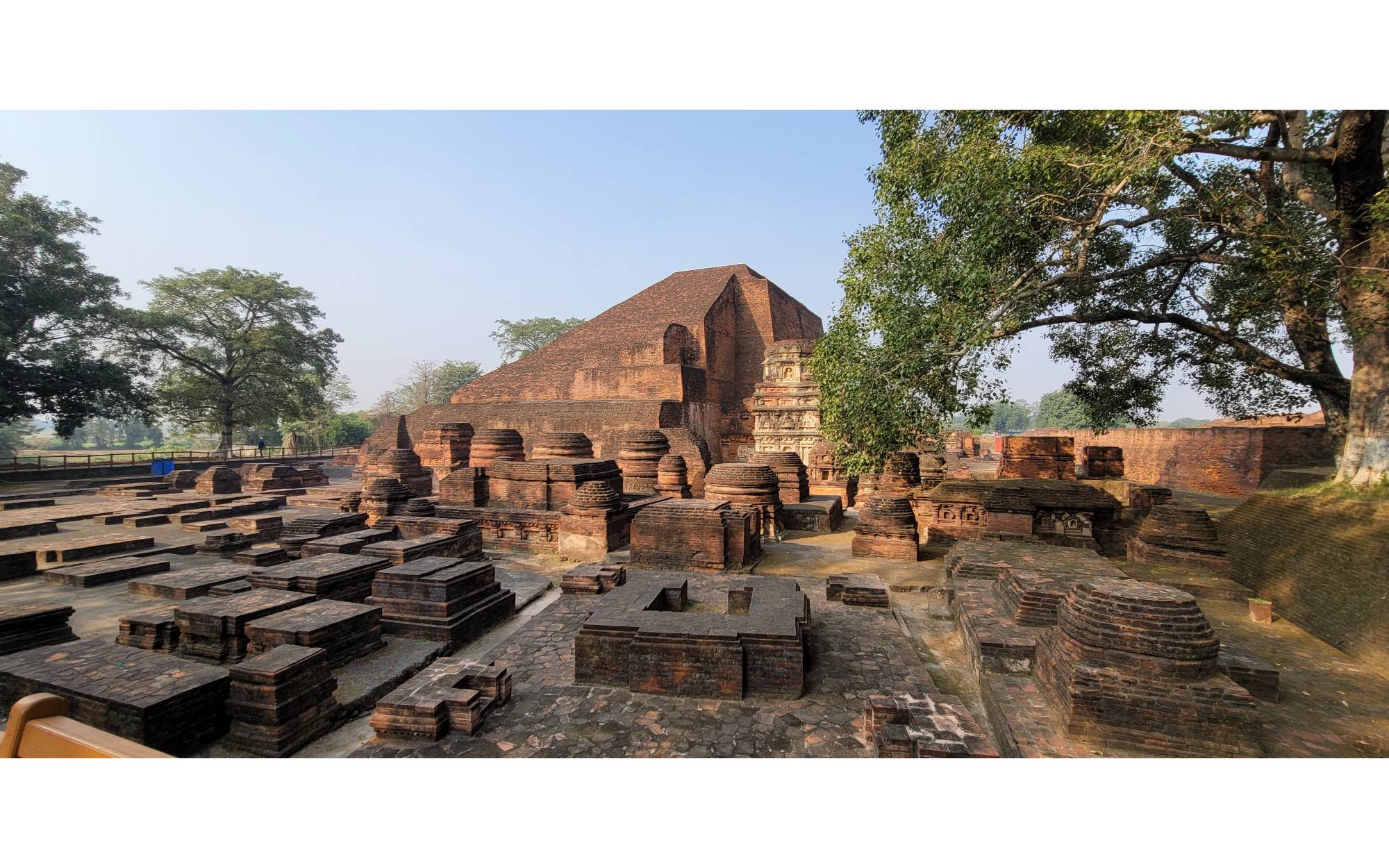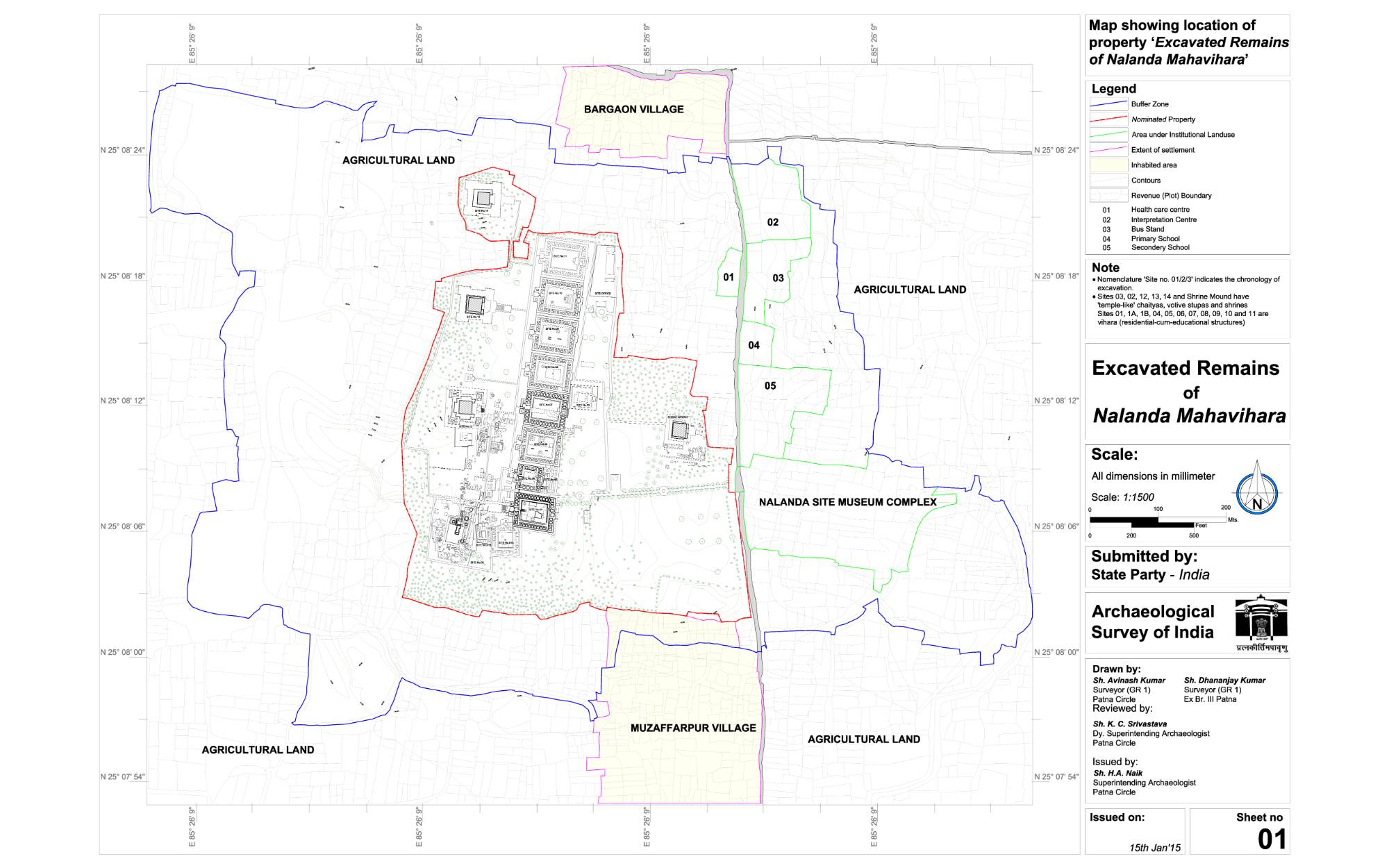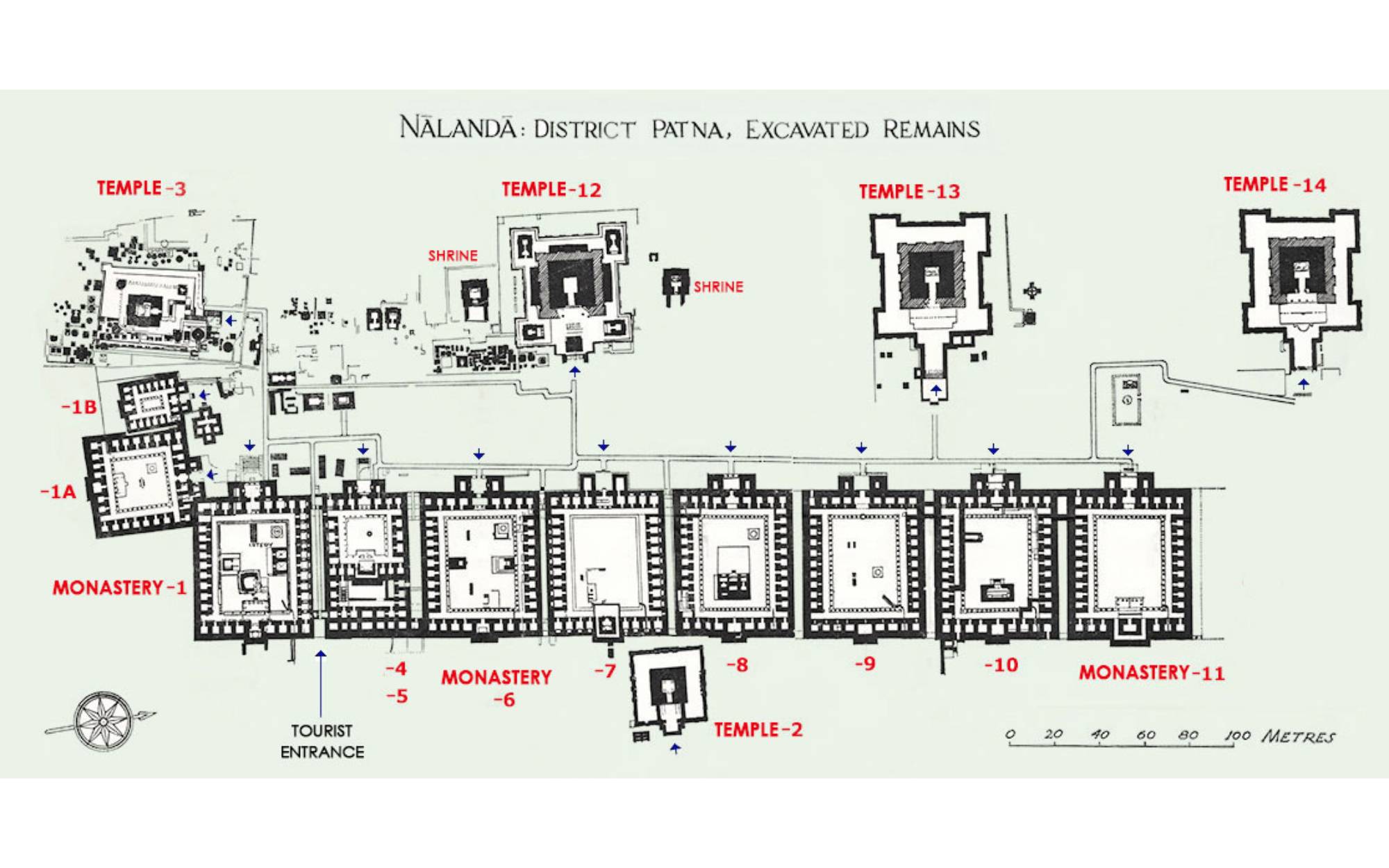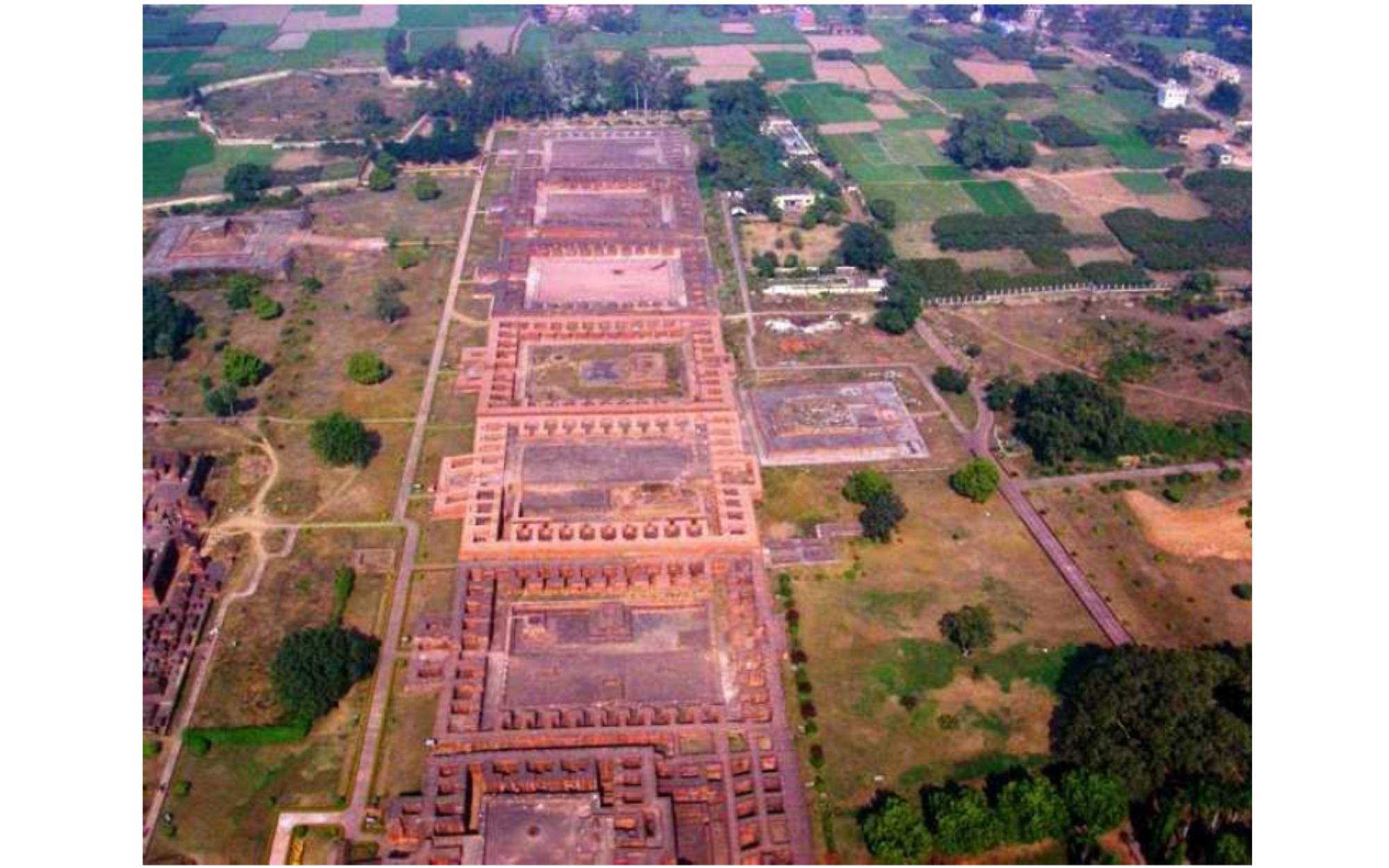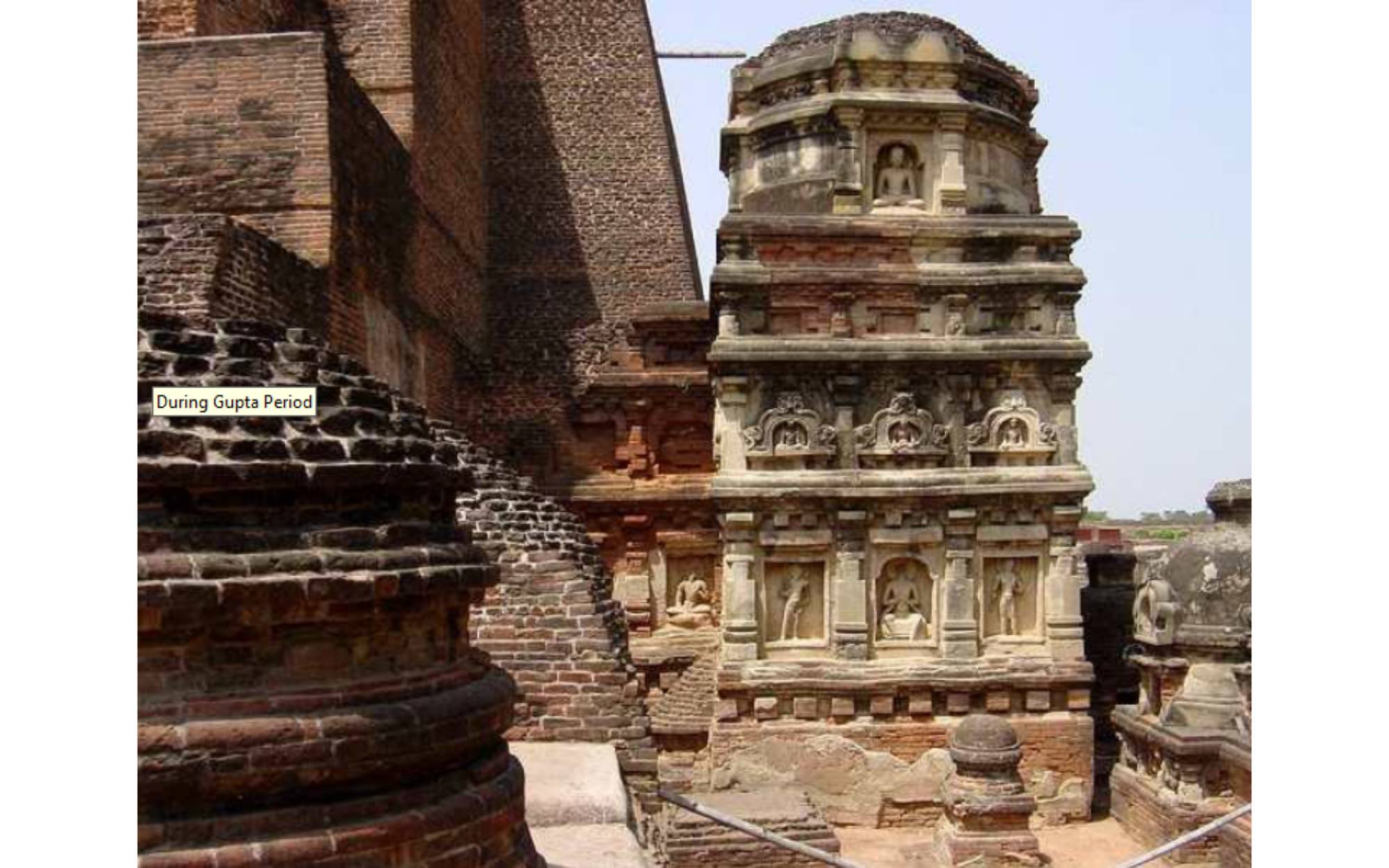Ancient Nalanda University
Ancient Nalanda University, bihar
Nalanda, a large Buddhist monastery, now in ruins, was one of the most publicly acknowledged Mahaviharas of ancient India located in ancient Magadha kingdom (modern Bihar). It remained a learning centre from 7th century BCE through c. 1200 CE and is many a time categorised as one of the early universities of India along with other institutions like ‘Vikramashila’ and ‘Taxila’. The patronage of the Gupta Empire saw this Mahavihara prosper during 5th and 6th century as also during the reign of emperor Harsha of Kannauj. However tantric developments of Buddhism during the Pala rule saw an eventual decline of Nalanda. Students and scholars from places like China, Central Asia, Korea and Tibet studied in this great vihara that taught Mahayana, Hinayana, Sanskrit grammar, Vedas and Samkhya among others. Imminent pilgrim monks like Hiuen Tsang and I-tsing from East Asia visited this place in the 7th century.
Recognised by UNESCO as a World Heritage Site, Nalanda not only boasts of being one of the most revered Buddhist tourism sites in India but also continues to draw attention from scholars, historians and archaeologists.
History
Founding and Early Years (5th Century CE)
Ancient Nalanda University was established in the early 5th century CE during the Gupta Dynasty, under the reign of Kumaragupta I (circa 415-455 CE). Nalanda's establishment is often attributed to the vision of this Gupta emperor, who was a devout patron of Buddhist learning and culture.
Growth and Development
Gupta Period: Under the Gupta rulers, Nalanda began as a modest institution but quickly grew into a major center of learning. The Gupta Empire's stability and support for education and religion helped establish the foundation for Nalanda's future growth.
Harsha Period (606-647 CE): The university saw significant expansion during the reign of Emperor Harsha of the Vardhana dynasty. Harsha was a great patron of Nalanda, providing endowments and ensuring its continued prosperity. His reign marked one of the high points in Nalanda's history, attracting scholars from across Asia.
Pala Dynasty (8th-12th Century CE): The Pala emperors, who ruled much of eastern India and Bangladesh, were ardent supporters of Buddhism. The Pala kings, including Gopala, Dharmapala, and Devapala, provided substantial patronage to Nalanda. This period witnessed the construction of additional monasteries, temples, and libraries, further solidifying Nalanda's status as a premier learning center.
Academic Achievements and Influence
Scholars and Students: Nalanda attracted scholars from various parts of Asia. Notable figures like the Chinese monks Xuanzang and Yijing visited Nalanda in the 7th century. Xuanzang's detailed accounts of Nalanda provide valuable insights into the university's operations, curriculum, and daily life.
Curriculum and Research: The curriculum at Nalanda was comprehensive, covering a wide range of subjects. The university was particularly renowned for its studies in Buddhist philosophy, logic, medicine, mathematics, and astronomy. Scholars at Nalanda made significant contributions to these fields, influencing intellectual thought across Asia.
Libraries: Nalanda's libraries, collectively known as Dharmaganja, were legendary. The main libraries, Ratnasagara, Ratnadadhi, and Ratnaranjaka, housed vast collections of manuscripts, including rare texts and commentaries on various subjects. These libraries were central to the academic life of Nalanda, facilitating extensive research and scholarship.
Decline and Destruction (12th Century CE)
Nalanda's decline began in the late 11th and early 12th centuries due to a combination of internal and external factors:
Rediscovery and Modern Legacy
Rediscovery: The ruins of Nalanda were rediscovered in the 19th century by British archaeologists. Systematic excavations in the early 20th century unearthed the remains of temples, monasteries, and stupas, revealing the grandeur of the ancient university.
Revival Efforts: In recent years, efforts have been made to revive the legacy of Nalanda. The Nalanda University Act of 2010 led to the establishment of a new Nalanda University near the ancient site, with an aim to promote interdisciplinary studies and international collaboration, echoing the spirit of the ancient institution.
Conclusion
Ancient Nalanda University remains a symbol of India's rich intellectual heritage. Its history, marked by periods of growth, scholarly achievements, and eventual destruction, reflects the dynamic and complex nature of India's past. The ongoing revival efforts highlight the enduring legacy of Nalanda as a beacon of learning and a testament to the historical contributions of Indian scholarship to the worldArchitecture
Nalanda University, one of the ancient world's premier centers for learning, flourished between the 5th and 12th centuries in Bihar, India. Its architecture reflects the zenith of Buddhist architecture and includes a variety of structural elements that highlight its grandeur and scholarly environment. Here are some detailed aspects of its architecture:
1. Overall Layout
The university's layout was meticulously planned, resembling a fortified city. It covered a large area with numerous buildings, including:
- Monasteries (Viharas): These were residential quarters for monks, structured around courtyards. Each monastery typically had multiple rooms for the monks, meditation halls, and smaller prayer halls.
- Temples (Chaityas or Stupas): These were religious structures used for worship and storing sacred relics. They often featured intricate carvings and statues of Buddha.
2. Monasteries (Viharas)
- Design: Monasteries were generally quadrangular, featuring a central courtyard surrounded by cells (rooms) on all sides.
- Material: Built primarily from red bricks, the walls were thick and robust to support multiple floors.
- Features: Each cell was equipped with a single entrance, a raised platform for a bed, and a niche for a lamp or a statue. The courtyard often had a well and a communal area for gatherings.
3. Temples (Chaityas) and Stupas
- Design: Temples were rectangular or square in plan, with stupas often featuring a dome-shaped top (anda) symbolizing the heavens.
- Decorations: Exterior walls of temples and stupas were adorned with intricate carvings, depicting scenes from Buddha’s life, various deities, and floral motifs.
- Stupas: The central stupa in Nalanda was a grand structure, surrounded by smaller stupas and statues, often forming a complex arrangement.
4. Lecture Halls and Libraries
- Lecture Halls: Spacious halls designed to accommodate large numbers of students. They had raised platforms for lecturers and seating arrangements that facilitated an effective learning environment.
- Libraries: Known as Dharmaganja, the libraries were vast and comprised three main buildings: Ratnasagara, Ratnadadhi, and Ratnaranjaka. These housed thousands of manuscripts and texts.
5. Architectural Style
- Influence: The architectural style of Nalanda was influenced by Gupta architecture, characterized by its solidity, simplicity, and harmonious proportions.
- Ornamentation: The use of decorative moldings, carvings, and terracotta plaques was prevalent. These often depicted religious motifs, narratives, and abstract patterns.
- Structural Elements: Archways, pillars, and terraced roofs were common, with some structures featuring corbelled arches.
6. Hydraulic Engineering
- Water Management: An intricate system of wells, stepwells, and drainage channels was employed to manage water supply and sanitation.
- Bathing Tanks: Large bathing tanks were provided for monks, which were sophisticatedly designed to maintain hygiene.
7. Preservation and Ruins
- Current State: The ruins of Nalanda, excavated by the Archaeological Survey of India, reveal the remnants of its glorious past. Brick foundations, stupas, and scattered sculptures give insights into the ancient architectural marvel.
- Conservation Efforts: Efforts have been made to preserve and study the site, recognizing its historical and cultural significance.
Conclusion
Ancient Nalanda's architecture showcases a blend of functional design and artistic grandeur, reflecting the university’s role as a beacon of knowledge and spirituality. Its structural remnants continue to inspire awe and scholarly interest, preserving the legacy of one of the world's earliest residential universities.
How to Go
reaching the ancient Nalanda University, one of the world's first residential universities and a significant historical site, involves several transportation options from nearby cities and transportation hubs. Here’s a detailed guide:
Nearest Major Cities and Transportation Hubs
- Patna: The capital city of Bihar, approximately 90 kilometers from Nalanda, serves as the primary gateway for travelers heading to the ancient university.
- Gaya: Another significant city, about 70 kilometers from Nalanda, known for its religious importance and also a convenient transit point.
By Air
- Jay Prakash Narayan International Airport, Patna: The closest airport to Nalanda, with good connectivity to major Indian cities such as Delhi, Mumbai, Kolkata, and Bangalore. From the airport, you can hire a taxi or take a bus to Nalanda.
- Gaya Airport: Another option with limited connectivity but offers direct flights from cities like Kolkata and Varanasi. From Gaya, you can reach Nalanda by road.
By Train
- Nalanda Railway Station: A small station with limited connectivity but a viable option for travelers from nearby areas.
- Bihar Sharif Railway Station: Located around 15 kilometers from Nalanda, this station has better connectivity and more frequent train services. You can take a taxi or an auto-rickshaw from the station to Nalanda.
- Patna Junction: A major railway hub with extensive connectivity across India. From Patna, you can hire a taxi or take a bus to Nalanda.
By Road
- From Patna: Taxis and buses are readily available, with the journey taking about 2-3 hours. Regular bus services are available from Patna’s main bus terminal.
- From Gaya: The road journey takes about 2 hours, with taxis and buses readily available.
- Self-Drive: Renting a car is an option if you prefer driving. The roads are generally in good condition and well-signposted.
Travel Tips
- Best Time to Visit: The ideal time to visit Nalanda is between October and March when the weather is pleasant.
Where to stay
Nalanda Regency:
- Description: A well-known hotel close to the ancient Nalanda University site, offering modern amenities and comfortable rooms.
- Facilities: Free Wi-Fi, restaurant, room service, and parking.
- Ideal For: Families, solo travelers, and business visitors.
Hotel Siddhartha International:
- Description: A mid-range hotel providing good value for money. It offers clean and well-maintained rooms.
- Facilities: Free Wi-Fi, restaurant, and tour assistance.
- Ideal For: Budget travelers and backpackers.
Tathagat Hotel:
- Description: A budget-friendly hotel with basic amenities, ideal for those seeking economical stays.
- Facilities: Restaurant, room service, and parking.
- Ideal For: Solo travelers and backpackers.
Guesthouses and Lodges:
- Description: Numerous guesthouses and lodges in Nalanda provide a homely atmosphere and are usually run by local families.
- Facilities: Vary by property but generally include basic amenities like Wi-Fi, meals, and local guidance.
- Ideal For: Travelers seeking a more personalized and budget-friendly stay.
Nalanda Resorts:
- Description: Some resorts offer luxurious stays with extensive facilities such as swimming pools, spas, and recreational activities.
- Facilities: Comprehensive amenities including fitness centers, fine dining, and leisure activities.
- Ideal For: Families, couples, and travelers looking for a more upscale experience.
Specific Recommendations
The Rajgir Residency:
- Description: Located in Rajgir, about 12 kilometers from Nalanda, this hotel offers a comfortable stay with modern amenities.
- Facilities: Swimming pool, restaurant, free Wi-Fi, and conference facilities.
- Ideal For: Families and business travelers.
Gargee Gautam Vihar Resort:
- Description: A luxurious resort located in Rajgir, providing a range of recreational activities and premium services.
- Facilities: Spa, swimming pool, multi-cuisine restaurant, and fitness center.
- Ideal For: Couples and travelers looking for a luxurious experience.
Hotel Nalanda Guest House:
- Description: A simple and budget-friendly option located close to the university ruins.
- Facilities: Basic amenities including Wi-Fi and meals on request.
- Ideal For: Budget travelers and students.

